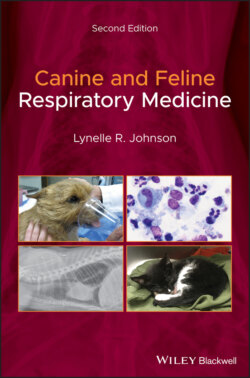Читать книгу Canine and Feline Respiratory Medicine - Lynelle Johnson R., Lynelle R. Johnson - Страница 14
Signalment
ОглавлениеYoung animals with nasal discharge are most often affected by infectious upper respiratory tract diseases. A nasopharyngeal polyp should be considered when discharge is accompanied by obstructed breathing. Primary ciliary dyskinesia is a defect of innate immunity that causes ineffectual mucociliary clearance, trapping of secretions, and recurrent infection. Therefore, this condition would be more frequently recognized in a younger animal. Affected dogs are often purebred, with an increased prevalence in the Bichon Frise, Old English Sheepdog (Merveille et al. 2014), and Newfoundland (Watson et al. 1999), although any breed of dog or cat can be affected. While neoplastic disease most typically affects older animals, it also occurs in young to middle‐aged animals (2–5 years of age) and can be particularly aggressive, especially in dogs. Nasal aspergillosis is most often encountered in younger dogs and older cats. Cryptococcosis and inflammatory rhinitis can affect dogs or cats of any age.
Nasal disease of most types (fungal, neoplastic, and inflammatory, as well as dental‐related and foreign body disease) is most commonly found in dolichocephalic dog breeds. An unusual combination of rhinitis and bronchopneumonia has been reported in the Irish wolfhound, where a genetic defect in respiratory immunity is suspected but has not been confirmed (Clercx et al. 2003).
